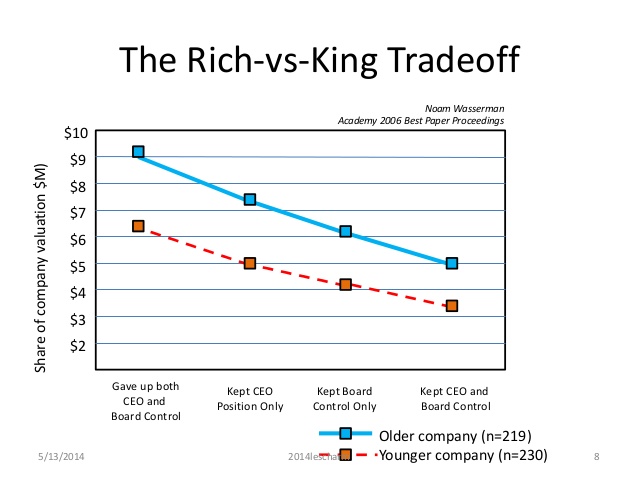How often do you and your friends come up with a startup idea? Almost every modern person has an idea for a personal project, especially if they work in the IT industry. Someone succeeded, why haven’t I?
Successful stories of Airbnb, Facebook and Apple, who had nothing but a garage and a quick-and-dirty MVP, are inspiring.
But do you know what’s more inspiring? Stories of difficulties and failure. Seriously.
In this article, I’ll share real-life examples of startups who faced challenges because of poor role distribution and give you a few tips on how to avoid them.
What you will learn:
Micromanager syndrome
This “disease” is not uncommon at all. Perhaps, you know someone who has it or even have it yourself.
Who are the micromanagers?
These are people who control all processes and cannot delegate even the simplest tasks. Sometimes we call them the control freaks.

Most often, they can’t trust their colleagues to perform a task well and behave like parents who want to control every step of a child. However, if you want your colleagues to grow professionally, you should breathe out and let them do the job you hired them for.
Things happen, but this is the only way for them to learn and the only way for you to focus on strategic tasks.
Our experience
Throughout our experience of working with startups, we have repeatedly encountered situations when a founder handholds every step of the development team. It’s quite a reasonable desire for each client, but we suggest looking at it from a different angle.
Hyperprotection at all cost
We once worked with a startup that was building a neat solution for the crowdfunding industry. The CEO wanted to actively participate in the development of his product which we welcome and encourage; however, there should be a healthy balance to it.
In our case, the CEO didn’t have enough time to take care of other aspects of his startup business because of his hyper-involvement into the coding stage. As a result, the startup wasn’t able to evolve and grow quick enough to meet the deadlines and expectations of investors.
This story shows that before you start working with a partner, you should adequately distribute your personal and working time, and then distribute areas of responsibility in the project.
Literally Jack of all trades
We partnered with a development company from Europe and provided them with a dedicated team to work on their projects.
Great company, great people, however, not a very significant result. The CTO took almost all control of their startup development, which made sense only until the micromanager syndrome kicked in.
Even though the relationship was great, our team didn’t make a lot of progress on the project they were working on, because the CTO was in many places at the same time: talking to clients, having meetings, or managing the in-house stuff.
Our solution to a micromanager problem

Recognising a person with a micromanager syndrome is quite simple: they ask many questions and repeat some of them several times. Most often they pay more attention to trifles than to global things, such as font size in a document or indents, and of course, they control every step of their colleagues.
At JustCoded, we follow the “partner-parent scheme, where there is no place for total control from any side, yet both parties are involved. First of all, we trust each other and therefore can delegate our responsibilities.
We can’t say we never make mistakes, but if they happen, there’s always a place for a dialogue with the client and there’s a way out of any situation.
Not only our formula works, but it brings stories of successful cooperation with many startups and companies, such as CapitalRise, Shojin, Homegrown, Archello and others.

How we do it
1. Initially, we work according to a transparent scheme, where we evaluate your project and then indicate the time and approximate cost. You can have some peace of mind right at this stage.
2. Depending on the complexity of the project, we can assign a dedicated team who will only work on your project.
3. To keep in touch, our managers use the latest project management tools and use the best project management methodologies.
With this distribution of responsibilities, you do not need to devote time to each developer and independently check the code. We are daily in touch, and if problems arise, we solve them online. Our team is ready to work together, which gives you more time to take care of your business challenges.
Micromanager syndrome is not the only problem that can make things worse for your growing business. Next, I’m going to tell a few reasons that may directly affect your startup.
Rich vs King trade-off
A Harvard University scientist Noam Wasserman developed this concept. He divided the founders of companies into 2 types: Rich and Kings. Kings are those people who want to completely and independently control all processes in the company. Often, such people retain most of the capital for themselves.
It is the most standard startup development scheme when you have an idea, and you want to create your own company. Initially, you will do all the work yourself, due to the lack of money, and in the future, you no longer want to share profit with “partners.

The second model is Rich. Motivated founders refuse capital and control to attract excellent investors and partners. Such people put the interests of the company above personal ones and believe more in the potential of the company than in temporary gain.
The ideal scenario is one in which a founder can be both rich and king. In practice, there are few people like that, and most often they are legendary personalities like Bill Gates.
Noam argues that success can only be gained by finding a middle ground between the king and the rich, while not blindly copying the experience of such individuals like Steve Jobs, but only asking reasonable questions based on their experience.
In our practice, we met with kings – the directors, who tightly controlled the entire development process, including marketing activities too. I can not say that this experience was a success, but they gave our team a reason to think about changes in the process of cooperation with new customers.
Business is not friendship
In addition to the personal attitude of co-founders, their professional qualities should also be considered. You need to think about it in advance because it is assumed that initially everyone will do their work, and the project will develop; but in practice, this is not true.
So we smoothly approached another problem of young startups which is an erroneous assumption. Young people most often overestimate their knowledge and their contribution to the project. This formula works as follows:
“I expect that in the future I will give the startup as much time and effort as I am now.
It shows that every novice founder usually attaches more importance to his contribution than the contribution of other participants and such a founder has neither the opportunity nor the time to objectively evaluate the costs and contributions of other project participants.
Personal attitude
Neither you nor your life stands still. Interests, a sense of the world, and social circles change over the years. Do not be surprised, but all these factors may affect the attitude to the common cause.
The common reason is the birth of children. A young family needs to spend a lot of time, and therefore sacrifices startup time. This topic is particularly acute when the creation of a startup does not take place in full measure, but after the main eight-hour workday, when there are 3-4 hours left for the common cause.
Let me give you an excellent example of the division of roles in the rental car company called Zipcar.

Initially, the two sides entered into a simple 50/50 partnership. It is the usual scheme, which is used by half the world. One of the parties was laid out in full, quit their job, and put all the efforts for startup on himself, while the second was engaged only in his free time. It all ended up with one of the co-founders leaving the company but retaining the status of a shareholder in the startup.
Conclusion
What can be done with the division of shares and with the dilemma of the founder? At the stage of project initiation, it is necessary to understand that everything tends to change, even if these changes cannot be predicted from the outset.
Therefore, it is necessary to provide for a dynamic structure of partnership and division of shares in the startup, and not be guided by a static formula like “50/50 or “60/40.
Then you need to clearly define for yourself that one person cannot control all the processes, and the first thing to learn is to delegate your authority.
My advice: try with simple tasks. It is not as difficult as you think. This practice will also teach you to trust your colleagues under any circumstances.
If my article helped you to understand this issue and you decided not to control everything by yourself and share your project 50 by 50 with your best friend, then this is already a small victory!
If not, then that is okay too. Our team is always ready to help you properly distribute the roles, as well as advise on the necessary technical solutions.




